An Exploration of Indian Street Food of four states: Banaras, Kochi, Gangtok and Jaipur
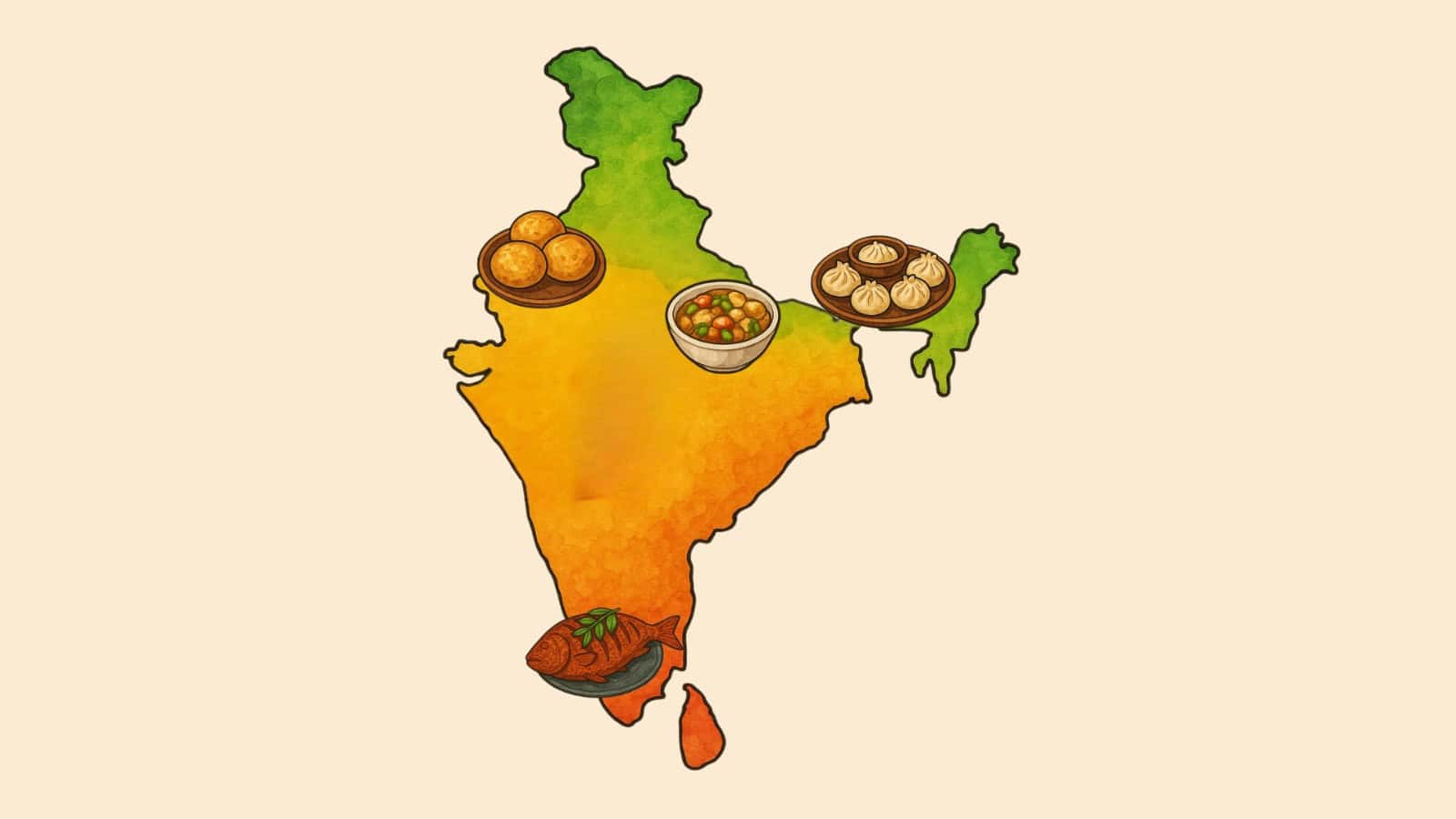
India’s street corners are a world of their own, vibrant, loud, colourful, and packed with the aroma of something delicious sizzling over open flames and bubbling away in large iron kadhais.
At sunrise, the ghats of Banaras hum with life as vendors set up carts filled with chaat bursting with spices and tangy chutneys. In Jaipur, as the pink walls of the old city catch the early light, the scent of fried kachoris laced with hing and chilli wafts through the air, drawing crowds before breakfast has even begun.
Up in the mist-covered hills of Gangtok, steam curls out of bamboo baskets filled with momos, warm and tender, often paired with a fiery red chilli sauce that defines Sikkimese comfort. Down in coastal Kochi, the streets near the harbour are alive with the fragrance of fish curries slow-cooked with coconut, tamarind, and curry leaves, a dish that speaks of spice trade legacies and sea-bound livelihoods.
This is not a story about food alone. Street food in India is culture on a plate. Each bite tells a tale of regional pride, of generations passing down recipes, of traders who brought in new ingredients, and of communities who made them their own.
It is where geography meets gastronomy and where a dish becomes a passport into the soul of a city. As you explore these iconic bites, chaats in Banaras, kachoris in Jaipur, momos in Gangtok, and fish curries in Kochi, you are not simply eating.
You are entering markets that have witnessed centuries of exchange, kitchens that have never been written about but serve flavours with a legacy. This journey through street food in India is an invitation to taste history, one city at a time.
Banaras Chaat: Where Street Food Meets Spiritual Energy
Banaras, one of the oldest living cities in the world, unfolds a sensory tale at every corner. As dawn breaks, narrow lanes awaken with the clang of metal ladles against iron tawas. Vendors begin preparing spicy, sweet, and tangy offerings that define the city’s iconic street food culture. The fragrance of fried potato, hing, and ghee wraps itself around the ghats like morning mist. Every street in Banaras has a flavour waiting to be discovered.
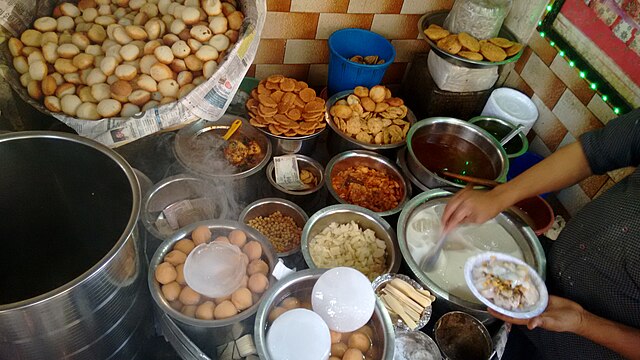
The city’s chaat is unlike anything found elsewhere in India. At Deena Chaat Bhandar, tamatar chaat takes centre stage. Tomatoes are simmered with spices, mashed, and topped with crisp sev, fresh coriander, and a squeeze of lemon. The taste is both fiery and refreshing. This dish alone captures Banaras’ flair for mixing the earthy with the divine.
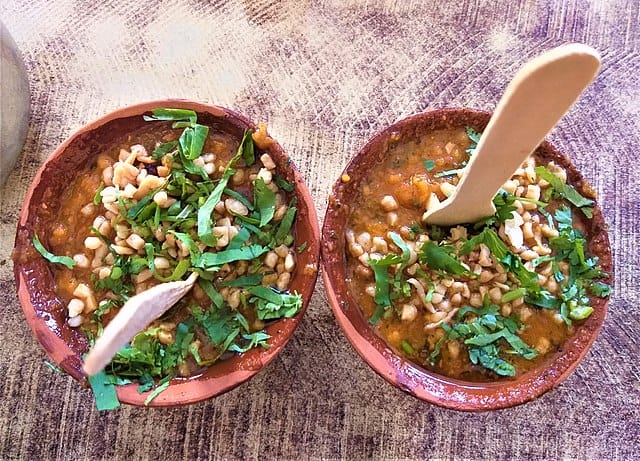
Not far away, Kashi Chaat Bhandar serves golgappas that deliver a perfect crunch. Each bite bursts with spiced water, boiled chickpeas, and mashed potatoes. The balance between spice and sourness makes it unforgettable. Papdi chaat, aloo tikki, and dahi puri also find eager takers throughout the day. These dishes showcase how street food in Banaras embraces both variety and balance.
Chaat is not a snack here. It is a ritual shared between friends, passed between strangers, and consumed during conversations that stretch into the evening. Many shops are run by families who have handed down recipes for generations. Their stalls may be small, yet their influence is enormous. The vendors remember faces, ask about preferences, and serve with smiles that are as warm as their food.
The backdrop adds to the charm. Monkeys leap between rooftops, temple bells ring in the distance, and the river offers a quiet contrast to the vibrant chaos of the streets. With every bite, there is a sense of place. The chaat is not simply eaten. It is felt.
Tamatar Chaat is not the only hero. Aloo tikki fried on a hot griddle develops a golden crust. It is then drenched in tamarind and mint chutneys. The contrast between crisp and soft, hot and cool, creates a harmony that lingers on the palate. Dahi puri offers a cooling counterpoint, served with generous spoons of sweetened curd, crunchy shells, and a medley of spice powders.
While trends evolve, the essence of Banaras’ street food remains rooted in tradition. There may be newer takes like cheese golgappa or chocolate chaat, but the original recipes continue to thrive. This coexistence of old and new reflects the soul of Banaras itself.
To eat street food in Banaras is to take part in something bigger. It is not about the dish alone. It is about the story behind it, the hands that prepare it, and the spirit of the city that serves it daily with unhurried grace.
Jaipur Kachori: The Spiced Soul of Rajasthan’s Street Food
Jaipur, the regal heart of Rajasthan, greets you with colours, culture, and the irresistible aroma of fresh kachoris frying in ghee. As the city stirs to life each morning, kachori stalls draw queues even before the shutters of bazaars rise. These flaky, golden snacks are more than breakfast. They are a celebration. In Jaipur, street food carries the richness of royal kitchens and the warmth of home-style spice.

Step into the bustling old city and head toward Rawat Mishthan Bhandar. Here, pyaaz ki kachori reigns supreme. Stuffed with a fiery mix of spiced onions, the crust is crisp, almost biscuit-like, and shatters into delicate flakes with every bite. The stuffing is soft, hot, and hits with a punch that leaves no room for subtlety. Paired with tamarind chutney or a bowl of aloo ki sabzi, it becomes both a snack and a satisfying meal.
Walk further, and you’ll find Kanji Sweets serving raj kachori that looks like an edible sculpture. This oversized kachori shell is hollowed and filled with curd, potatoes, chickpeas, boondi, and layers of chutneys. It is crunchy, tangy, spicy, and sweet, all in one. The dish mirrors Jaipur’s personality: grand, layered, and impossible to ignore.

Each shop has its own secret mix of masalas. Gopi Kachori Wala offers aloo kachori with mint chutney that delivers a refreshing zing. Meanwhile, Sampat Kachori’s spicy version has minimal garnish but leaves a lingering warmth. Every corner offers something new. Yet, each keeps the foundation of the kachori intact: bold flavours wrapped in golden crispness.
Jaipur’s street food history runs deep. Kachoris likely emerged as a practical, long-lasting food in the desert climate. Yet, over time, they became synonymous with community and indulgence. Office-goers, school children, and tourists all huddle over kachoris in the morning rush, united by hunger and habit.
It is not rare to find people carrying boxes of kachoris home. Many travel with them as gifts, knowing well that the ones made in Jaipur have no match. The texture, the spice, and the ghee-rich depth speak of recipes that have been perfected across generations.
Sunday mornings have a different rhythm. Families gather around club kachori platters, served with spicy potato curry and jalebis. The sweet and spicy pairing is a local tradition. It turns breakfast into a ritual worth waking early for. Some even consider it sacred.
Mawa kachori is another gem. Unlike the spicy versions, this sweet treat is filled with khoya and nuts, deep-fried and dunked in saffron syrup. It appears during festivals and weddings, offering richness and indulgence in equal measure.
Kachoris in Jaipur are more than crispy delights. They are edible stories of a city that wears its flavour on its sleeve. Each bite, bold and unforgettable, is proof that street food in Jaipur reflects not only culinary excellence but also the warmth of a city that never holds back.
Gangtok Momo: The Heartwarming Comfort of the Himalayan Street Food
Nestled in the Eastern Himalayas, Gangtok greets visitors with cool breezes, panoramic views, and a sense of calm that lingers. Yet in its narrow lanes and lively cafes, there is something else that warms the heart and fills the air with steam, the unmistakable comfort of momos. These humble dumplings are the pride of Gangtok’s street food culture. They appear at every corner, offered by family-run stalls, roadside cafes, and trendy eateries alike.
In the soft morning light, MG Marg comes alive. Vendors begin to steam bamboo baskets lined with momos. The aroma is delicate yet distinct, flour, meat, ginger, and spice mingle in the air. For many, breakfast begins here. A plate of hot momos served with fiery red chilli chutney becomes the perfect way to start the day.
Momos in Gangtok are not one-size-fits-all. There are steamed ones with pork, chicken, and vegetables. There are deep-fried versions with crisp edges and soft centres. Some stalls offer kothey momos, pan-fried until golden on one side. Others serve jhol momos, swimming in a light, spiced broth. Cheese-filled momos have also gained popularity, offering a twist on tradition.
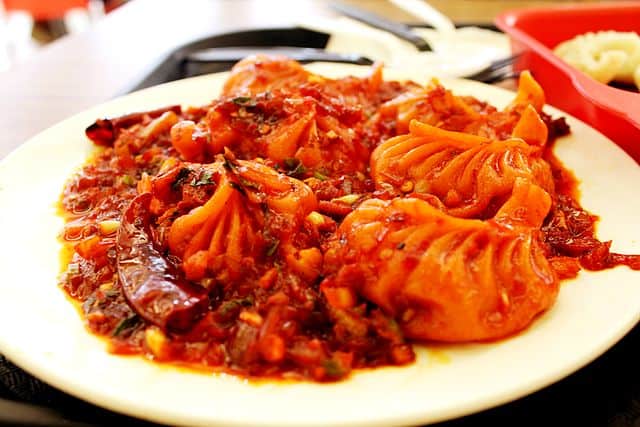
The chutney deserves its own praise. Often made with dried chillies, garlic, and tomatoes, it is bold and addictive. Every vendor prepares it differently. Some are smooth and smoky. Others are chunky and sharp. A dollop of this chutney can turn the mildest momo into a flavour explosion.
Each eatery in Gangtok has its signature style. Some focus on pork, using recipes influenced by Tibetan and Nepali traditions. Others introduce seasonal fillings such as spinach, mushrooms, or even radish. The wrappers are hand-rolled, the pleats folded with precision, and the steaming done over open flames. There is no rush. The process respects the art.
More than a dish, momos are a part of everyday life in Gangtok. Locals eat them during lunch breaks, between errands, or while catching up with friends. Tourists arrive with curiosity and leave with cravings. There is no ceremony around eating momos, yet the act always feels special. It brings warmth in cold weather and comfort in quiet moments.
The city’s love for momos also shows in its creativity. Cafes now serve dessert versions filled with chocolate or custard. Fusion plates mix momos with noodles or layer them with cheese and sauces. These innovations sit comfortably beside age-old recipes, keeping the tradition alive while letting it evolve.
Gangtok’s street food scene may feel understated, but its flavours carry weight. In the hands of its momo makers, simplicity becomes excellence. With each bite, one tastes care, skill, and heritage.
Eating momos in Gangtok is like taking part in a daily ritual. It is a reminder that food can be both nourishing and joyful, especially when served with a view of misty mountains and a smile.
Kochi Fish Curries: Coastal Spice Symphony of South Indian Stree Food
Kochi, with its laid-back rhythm and sea-kissed breeze, carries an aroma that never fades. As you step into the city’s lanes, the scent of mustard seeds crackling in coconut oil, curry leaves fluttering in hot pans, and fish gently simmering in earthen pots invites you closer. Here, fish curry is not just food. It is the heartbeat of Kochi’s street food culture and the pride of every coastal kitchen.
At breakfast stalls and lunch houses, the red hue of Kerala fish curry speaks louder than words. Prepared with kokum, known locally as kodampuli (with many other terms), this dish blends tamarind-like sour notes with the heat of red chillies. Sardines or mackerel soak in the tangy gravy until tender. Served with kappa, or boiled tapioca, it becomes a staple that defines tradition and taste in every household.
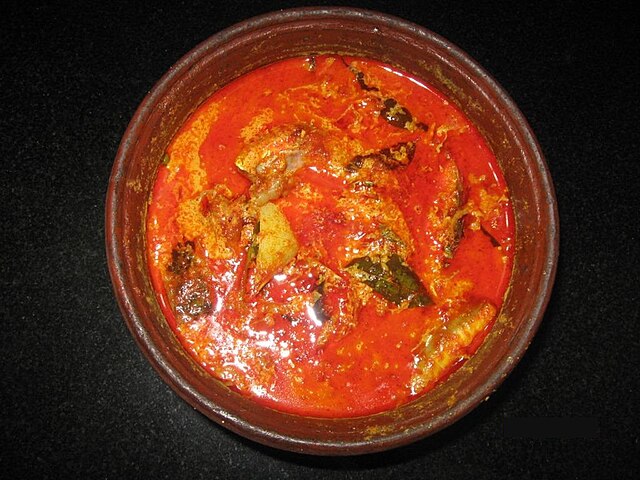
Along the waterfront, Kochi’s seafood markets hum with energy. The day begins with auctions, as the freshest catch makes its way from sea to stall. Restaurants nearby wait patiently. Small, family-run eateries have honed their recipes over generations. They cook slowly and serve fast, often with rice, papadam, and seasonal vegetables on banana leaves that release a gentle earthy note with the heat of the food.
The beauty of Kochi’s street food lies in its ingredients. There is no shortcut. The curries rely on fresh turmeric, curry leaf, crushed garlic, and hand-ground spice pastes. Pearl onions add sweetness. The kodampuli gives a smoky depth. Fresh coconut is grated, blended, and used with respect in almost every dish.
While old kitchens keep their legacy alive, modern cafés in Fort Kochi experiment with tradition. They serve fish moilee with crusty bread, offer grilled catch of the day with mashed yams, and pour spicy rasam as a starter. These new spaces are not changing the rules. They are simply writing new chapters that pay homage to the original.
Meals in Kochi are often served as thalis. Each plate is a curated spread, with fish curry, dry vegetable stir-fries, sambar, rasam, and chutneys that balance every note. The simplicity of steamed rice allows the fish to shine. The harmony is quiet yet deeply satisfying.
To taste fish curry in Kochi is to understand more than cuisine. It reveals the sea, the soil, and the stories passed down in every kitchen. It is a moment where space, comfort, and memory all share the same plate.
A Taste of India, One Street at a Time
Across the vast stretches of India, flavours shift like landscapes. In Banaras, chaat offers more than spice. It captures the ancient rhythm of a city that never sleeps. In Jaipur, flaky kachoris remind us of royal kitchens and bustling morning traditions passed through time. Gangtok’s steaming momos deliver the quiet comfort of mountain life. Kochi’s fish curries serve the depth and generosity of the sea.
Each dish tells its own story. But when seen together, they create a map that connects the Ganges with the desert and the hills with the coast. This is street food in its purest form, served without pretence and seasoned with memory.
To truly understand these flavours, one must step outside the guidebooks. Taste the heat of tamarind under a tree in Banaras. Feel the early sun warm your shoulders as you queue for kachoris in Jaipur. Watch mist rise above a momo stall in Gangtok. Sit by the backwaters as a plate of red curry and tapioca arrives in Kochi. Speak to the vendors. Ask them how long they’ve been doing this. Smile. Eat slowly.
What ties these experiences together is something deeper than spice. It is the joy of sharing, the comfort of the familiar, and the thrill of discovering something entirely new. These dishes are not bound by fine dining or presentation. They are meant to be held, broken, dipped, and passed around.
In a country defined by diversity, these four humble dishes show that flavour travels farther when shared. Street food in India is not a trend. It is tradition, resilience, and identity, all wrapped in a paper plate and served with pride.
And the soul of India? You will find it there, between bites, surrounded by laughter, spice, and stories that stay with you long after the last mouthful.
Read More: Latest



